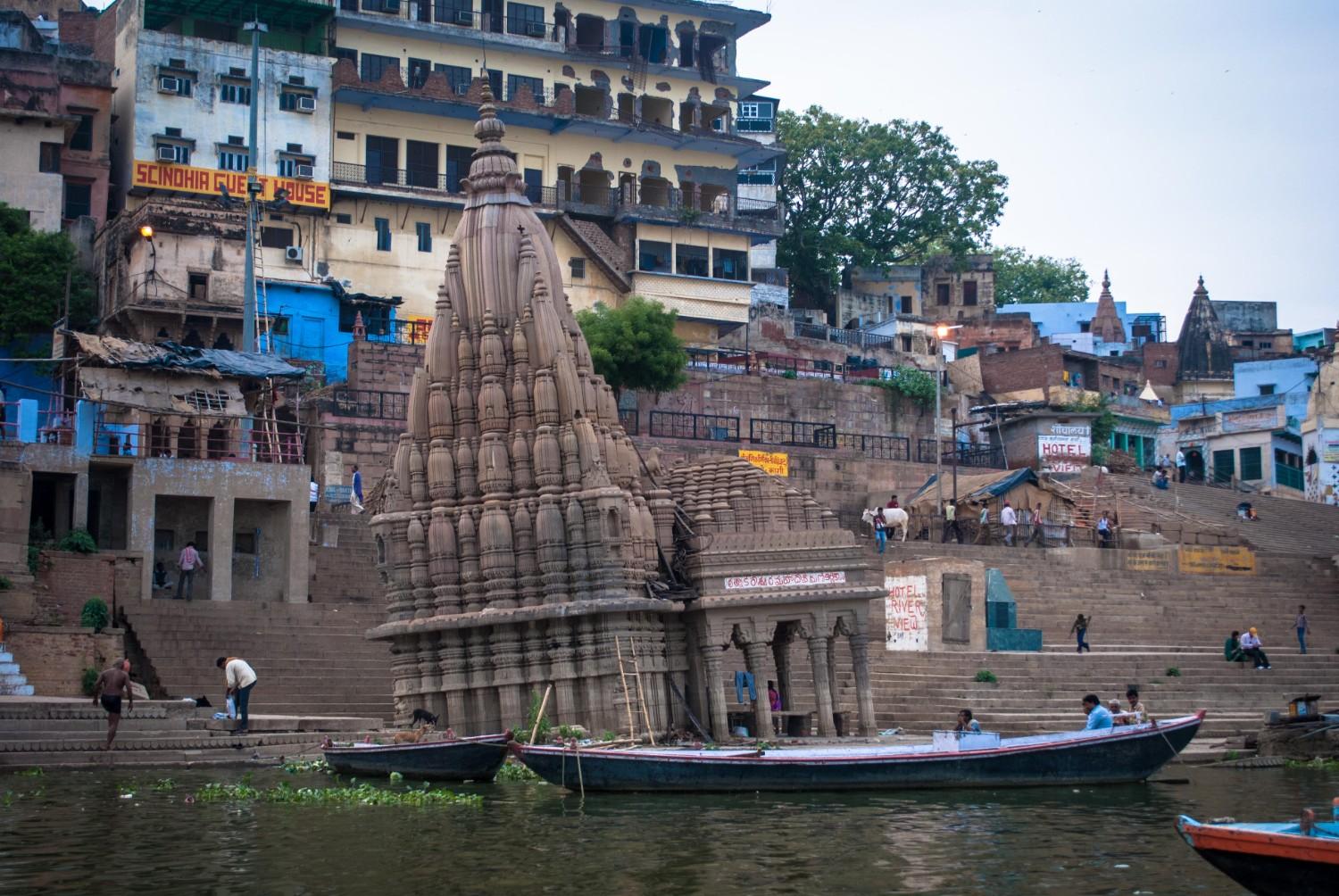Manikarnika Ghat: Unveiling the Sacred Cremation Ground of Varanasi

Nestled along the banks of the sacred Ganges River in Varanasi, India, Manikarnika Ghat stands as a timeless testament to the cycle of life and death. Revered as one of the oldest and most sacred cremation grounds in Varanasi, Manikarnika Ghat holds profound spiritual significance for Hindus and visitors alike. In this exploration, we unveil the rituals, traditions, and spiritual essence of Manikarnika Ghat, offering insight into its role as a gateway to the afterlife.
1. A Sacred Site of Hindu Tradition
Manikarnika Ghat is steeped in ancient Hindu tradition and mythology, with its origins dating back centuries. According to legend, it is believed to be the spot where the earring (Manikarnika) of the Hindu goddess Sati fell to earth during her self-immolation ritual. This sacred site thus became synonymous with cremation rituals and is regarded as a place where the cycle of life, death, and rebirth unfolds in a continuous rhythm.
2. Rituals and Customs of Cremation
At Manikarnika Ghat, cremation ceremonies take place round the clock, as families bid farewell to their departed loved ones with solemn reverence. According to Hindu tradition, cremation at Manikarnika Ghat is believed to grant moksha (liberation) to the soul, freeing it from the cycle of rebirth. Visitors to the ghat can witness the elaborate rituals and customs associated with cremation, from the preparation of the funeral pyre to the final immersion of ashes in the sacred waters of the Ganges.
3. Spiritual Significance
For Hindus, cremation at Manikarnika Ghat is not merely a funeral rite but a deeply spiritual experience imbued with symbolism and meaning. It is believed that the act of cremation purifies the soul and facilitates its journey to the afterlife. The ashes of the departed are considered sacred, and the act of scattering them in the Ganges is believed to bestow blessings and ensure spiritual liberation for the deceased.
4. Witnessing the Ganga Aarti
While Manikarnika Ghat is primarily known as a cremation ground, it is also a site of vibrant spiritual activity. Each evening, as the sun sets over the Ganges, the ghat comes alive with the mesmerizing spectacle of the Ganga Aarti. Priests clad in traditional attire perform elaborate rituals, offering prayers and hymns to the river goddess Ganga. The Ganga Aarti at Manikarnika Ghat is a poignant reminder of the eternal connection between life, death, and the divine.
5. Navigating Tradition and Modernity
Despite its ancient traditions, Manikarnika Ghat has also evolved with the times, embracing modern practices and technologies while retaining its spiritual essence. Today, the ghat is equipped with facilities such as electric crematoriums and support services to accommodate the needs of mourners and visitors. This harmonious blend of tradition and modernity ensures that Manikarnika Ghat continues to serve as a sacred space for generations to come.
6. Preserving Cultural Heritage
As one of the oldest and most revered sites in Varanasi, Manikarnika Ghat holds immense cultural and historical significance. Efforts are underway to preserve and protect the ghat's heritage, including initiatives to maintain its infrastructure, promote eco-friendly cremation practices, and educate visitors about its importance. By safeguarding the cultural legacy of Manikarnika Ghat, stakeholders aim to ensure that its spiritual sanctity remains intact for future generations.
7. Pilgrimage and Spiritual Reflection
For many Hindus, a pilgrimage to Manikarnika Ghat is a sacred duty and a profound spiritual experience. It is believed that bathing in the waters of the Ganges and witnessing the rituals of cremation can purify the soul and bring blessings and spiritual merit. Visitors to the ghat often engage in acts of charity and seva (selfless service), further deepening their connection to the divine and to humanity.
8. Exploring Beyond the Ghat
While Manikarnika Ghat is the focal point of spiritual activity in Varanasi, the surrounding area is also rich in cultural and historical attractions. Visitors can explore nearby temples, markets, and ashrams, immersing themselves in the vibrant tapestry of Varanasi's ancient streets. From the towering spires of Kashi Vishwanath Temple to the tranquil lanes of the Old City, there is much to discover beyond the sacred shores of Manikarnika Ghat.
Conclusion
In conclusion, Manikarnika Ghat stands as a sacred symbol of life's impermanence and the eternal cycle of birth and death. As a gateway to the afterlife, it embodies the spiritual essence of Varanasi, inviting visitors to contemplate the mysteries of existence and the transcendental nature of the soul. Whether as a site of cremation rituals, a backdrop for divine worship, or a space for spiritual reflection, Manikarnika Ghat continues to inspire awe and reverence in all who journey to its hallowed shores.
